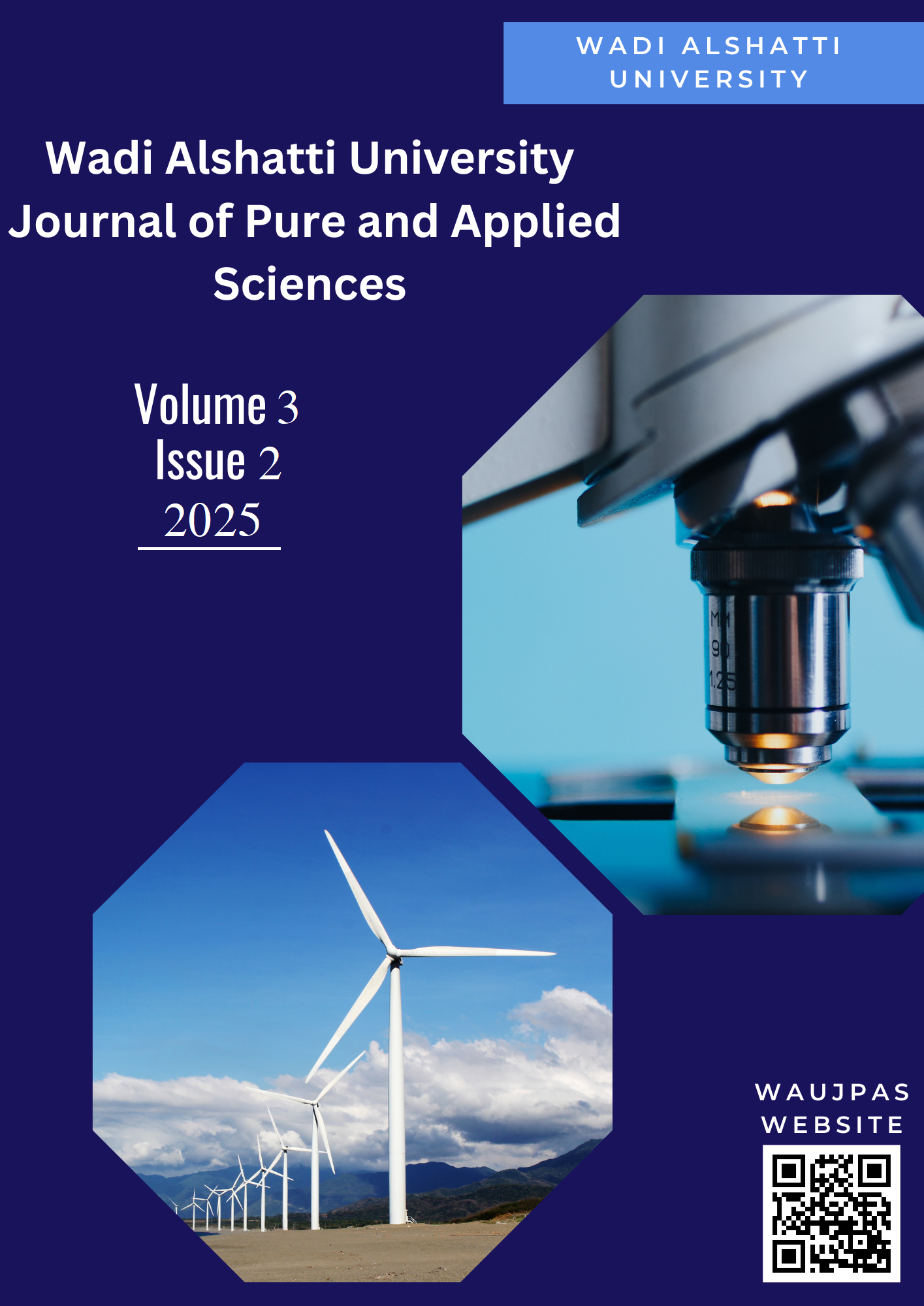Investigation of Expired Esomeprazole's Effectiveness as a Corrosion Inhibitor for Brass in Gabraun Water
DOI:
https://doi.org/10.63318/waujpasv3i2_34Keywords:
Gabraun water, Brass alloy, Corrosion rate, Esomeprazole, Corrosion inhibitorsAbstract
This study aimed to investigate the effectiveness of Esomeprazole as an inhibitor for Brass corrosion in Gabraun water. Brass is an ideal alloy for transporting water through pipes and fittings and is also suitable for use in marine engines and pump parts. The tests were conducted at room temperature, using Gabraun water as the electrolyte. The weight loss method was employed, and both open and closed systems were used for the testing. Results indicated that the weights of all specimens, both with and without the inhibitor, decreased after the tests. The lowest corrosion rate recorded was 0.04139 cm/year for a specimen with an area of 8.545 cm² and an inhibitor amount of 1.5g. Importantly, the color of the Gabraun water did not change, which is attributed to the effect of the inhibitor. However, there was no significant difference in corrosion rates between the specimens tested with the inhibitor and those without it. This suggests that while Esomeprazole is not effective in reducing the corrosion rate of Brass, it does inhibit the reaction between copper (Cu) and sulfate (SO₄). Additionally, Gabraun water proved to be a corrosive medium when used as an electrolyte for Brass testing, which contrasts with the findings of the Langelier Saturation Index (LSI).
Downloads
Downloads
Published
Issue
Section
License

This work is licensed under a Creative Commons Attribution-NonCommercial 4.0 International License.
This journal uses Creative Commons Attribution-Noncommerical 4.0 International License (CC BY-NC 4.0), which permits use, sharing, adaptation, distribution and reproduction in any medium or format, as long as you give appropriate credit to the original author(s) and the source, provide a link to the Creative Commons license, and indicate if changes were made. To view a copy of this license, visit https://creativecommons.org/licenses/by-nc/4.0/.
Copyright of articles
Authors retain copyright of their articles published in this journal.





